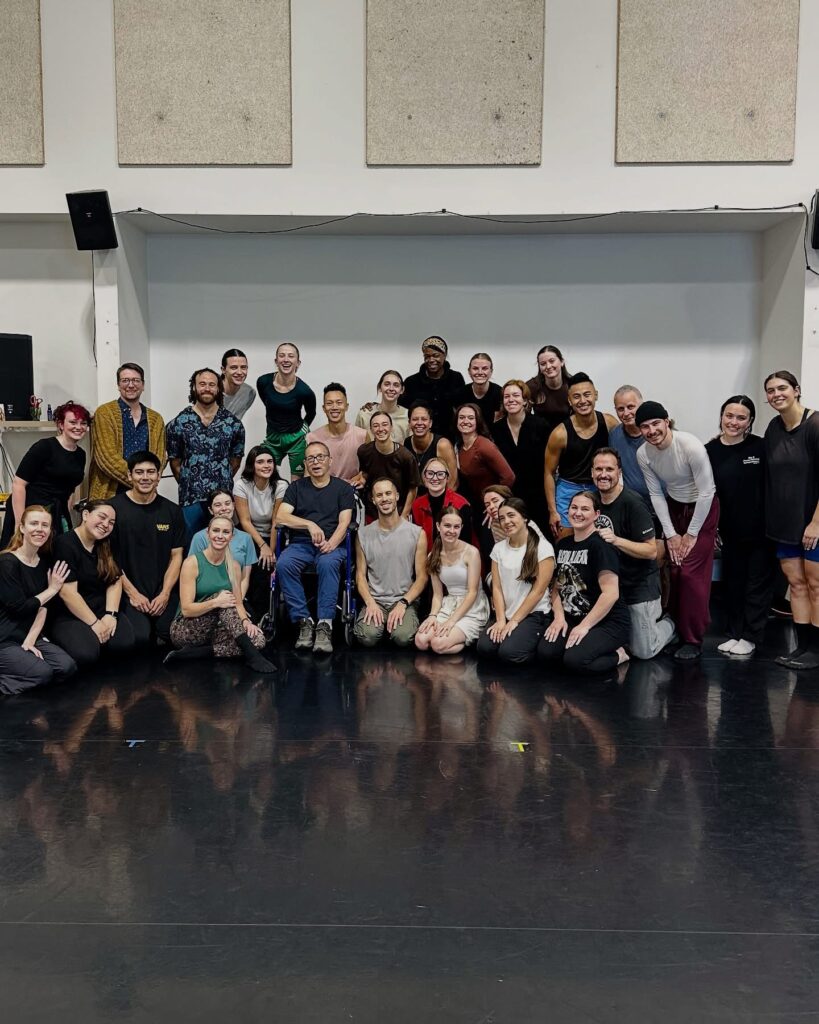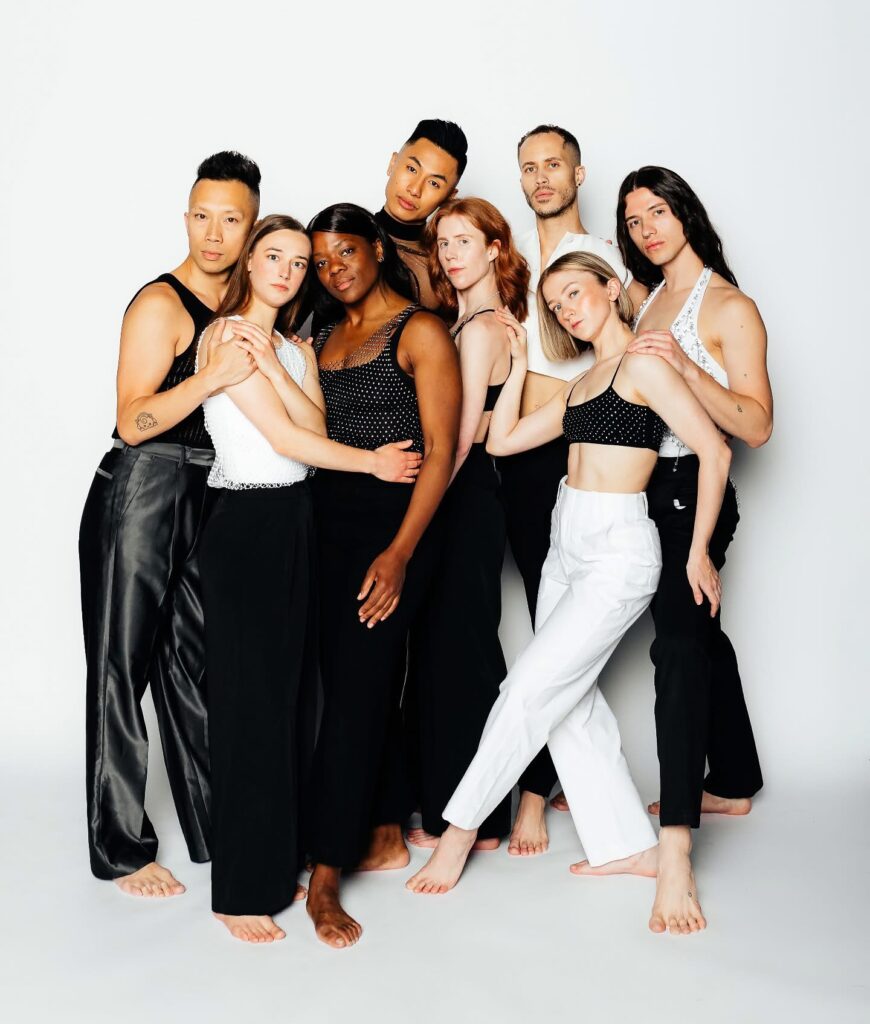Repertory Dance Theatre’s (RDT) 60th anniversary season’s first production this week will highlight a profound and fruitful relationship with choreographer Zvi Gotheiner, which spans more than half of the company’s history and whose works have produced some of its most memorable performances.
Gotheiner’s Migrations (2022), which also has been restaged by Doron Perk, will receive its Utah premiere in performances Oct. 2-4 at 7:30 p.m., in the Jeanné Wagner Theatre at the Rose Wagner Center for Performing Arts. It also features an original score by composer Scott Killian, who has collaborated with Gotheiner on six RDT commissions. Migrations is the 10th Gotheiner work in the RDT catalogue.
Since the 1993 commission of his Erosion, which was inspired by southern Utah’s red rock landscapes, RDT dancers consistently have quickly found their best instincts in working with Gotheiner. In an interview with The Utah Review, Gotheiner, the founder of ZviDances in New York City, said he has always felt at home in the RDT studio. In observing a recent rehearsal of the evening-length work in the RDT studio, one could discern immediately just how naturally engaged the dancers are with Gotheiner. Regarding a stunning solo by Caleb Daly, Gotheiner had no notes to add. As for others, there were just small suggestions to hone movement gestures and timing.
Migrations feels like a synthesis of other works by Gotheiner that grace RDT’s historic and immense catalogue of choreography. Building upon the unique migratory patterns of birds, Gotheiner contemplates how nature defies the constraining impacts of artificial borders as humans have imposed. The nature of migration has always been voluntary and instinctual even for humans in their journey to make life satisfying and comfortable for themselves and their loved ones. Unfortunately, migrations also have been forced upon individuals for numerous reasons: environmental degradation and impacts of climate transitions, wars and genocides, economic collapse, political crises, famine, natural disasters and devastation of their homes.
There is a deep sense of humility that emanates in Gotheiner’s considerations of migrations. It resonates with a similarly articulated theme in bird ecologist Eli Knapp’s latest book, In the Crosswinds: Birds, Humans, and the Paradox of Place, which was published this summer by the Utah-based Torrey House Press (watch The Utah Review for a forthcoming feature review and interview with the author). Acknowledging that many ecologists have been naturally averse to species they term as being invasive in a new environment, Knapp prefers the term of dislocation. He writes, “Afterall, we’re responsible for most of these fellow refugees now making the best of their circumstances. Should adaptability be lauded or scorned? Are these maligned invaders merely victims of a global diaspora?” Gotheiner’s Migrations illuminates the conversation that Knapp’s question inspires.
Migrations inscribes a new chapter following the lineage of other RDT commissions that Gotheiner and Killian have set on the company dancers: Glacier, Lapse, Bricks, Dancing the Green Map, and Dancing the Bears Ears. In 2017, in preparation for Dancing the Bears Ears, a group including Gotheiner, Linda Smith (RDT’s artistic director emerita) and members of RDT and ZviDances visited the Bears Ears lands. Accompanied by Navajo and Diné guides, the group made stops at the Fry Canyon Ruin, the steep switchbacks of Moki Dugway, a kiva at the Cave Tower Ruin, a hike According to Smith, in an interview at the time, the dancers talked on the first day of their workshop how they already were being changed in understanding why this land is sacred.
Gotheiner was moved by the instinctive sacredness of land. In a 2017 interview with The Utah Review following a rehearsal where the dancers worked for the first time with Killian’s impressive musical score, he talked about his own transition from a “farm boy” (born in an Israeli kibbutz) to “city mouse,” living in New York City, “a different kind of jungle,” he added. Gotheiner welcomed the opportunity to come here, “because I know how it touches the soul.”
At Bears Ears, perhaps Gotheiner’s most centralized epiphany for the new work came unexpectedly. The group had planned to hike up the canyon and observe petroglyphs but he knew that his knees were not up to the rigors of an uphill hike. “I knew I wasn’t going to make it so I went down alone into the canyon and to meditate,” he recalled at the time. “I felt truly alone in nature and I thought to myself that I am complete with my life. If I would have suffered a snake bit then, I wouldn’t have minded it. I fell asleep, as soundly as a baby.”

Returning to Utah in this latest visit, Gotheiner feels at home again in the RDT studio. The provenance of Migrations reinforces a point Gotheiner made in the 2017 interview about the Bears Ears piece: “Only when some disconnect from some part of their humanity can they think about abusing or disrespecting nature.” To quote Smith, Bears Ears was a dance “about how this incredible sacred landscape healed us, and brought us into a harmonious place.” A perfect anniversary season opener, Migrations is RDT’s latest dance ritual to raise fresh consciousness about these relationships.
For tickets and more information, see the Repertory Dance Theatre website.


